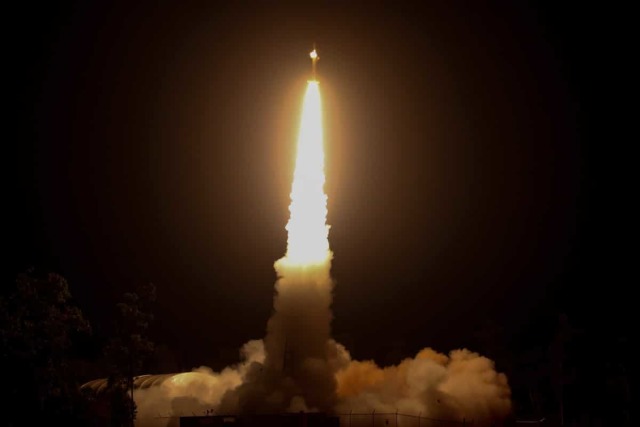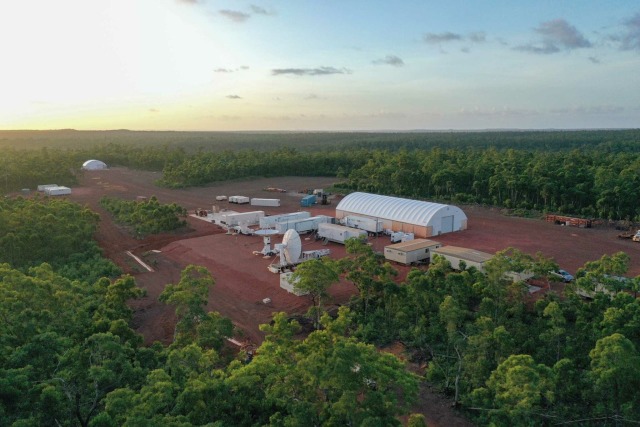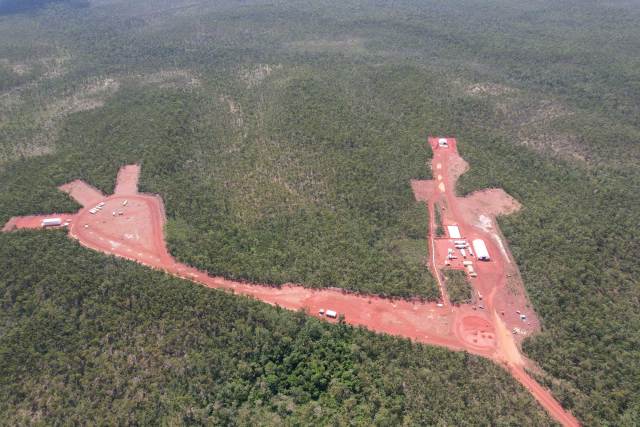Last Sunday, June 26, was a significant day at the same time for the American space agency and the whole country — Australia. For the first time in more than a quarter of a century, NASA has carried out a space launch of its own carrier from a territory outside the United States. Well, for Australia, this is the first launch from a private spaceport.
The Black Brant IX suborbital rocket lifted the payload to a height of just over 326 kilometers as part of the XQC (X-ray Quantum Calorimeter, X-ray Quantum Calorimeter) mission. According to the updated press release NASA, the launch was successful, and a preliminary analysis of telemetry showed that the scientific instrument was able to obtain valuable data during the flight.
Both carrier stages fell at some distance to the southwest of the launch complex, and the payload descended by parachute (approximately 130-150 kilometers from the launch site). As of June 27, their search has not yet been completed.

The launch of Black Brant IX from the launch pad of the ASC cosmodrome
Image Source: NASA

Equipment for control and communication with the launch vehicle, part of which NASA was carrying from the USA
Image Source: Equatorial Launch Australia
The purpose of XQC is to register X—ray radiation emitted by clouds of dust and gas in interstellar space. To do this, detectors cooled to one-twelfth of a degree above absolute zero are installed in the payload compartment. After leaving the earth's atmosphere, the device rotates so that the Earth gets into its "field of view", and then focuses on the target area of the sky. At the first stage, background radiation from the Sun and the planet is recorded, and at the second — the main measurements of the experiment.
In order to shield the payload from the Rengten radiation emitted by our star as much as possible, the launch was carried out at night. Initially, it was planned for seven o'clock in the evening local time, but due to weather conditions, the pre-start countdown was stopped several times. As a result, the rocket took off at midnight. The mission lasted about 15 minutes, the useful time of the devices was about two to five minutes. The exact values of the last parameter and the amount of useful data will be known after the instrument compartment is detected and the data is unloaded.
The launch site of the next suborbital mission of the US National Aeronautics and Space Administration (NASA) was the private Arnhem Space Center (Arnhem Space Center, ASC). It is located on the Arnhem Land Peninsula in the northeastern part of the Northern Territory of Australia. It has been created since 2015 by the company Equatorial Launch Australia (ELA) with the support of local and federal authorities.
Most of the time since the beginning of work on the cosmodrome, various bureaucratic and environmental approvals have taken up. The location of the object also caused a lot of difficulties: it is located near the town of Nulanbei in the territories inhabited by the aborigines of Kumat (Gumatj). During the construction of the cosmodrome, their interests and comments on environmental protection were taken into account, for which local nationalities are responsible.
Online broadcast of the launch. The first pancake (in terms of sound quality, video and editing) is clearly a lump, but the shortcomings are compensated by the genuine delight of the presenters from the fact of a space launch from their native earth / ©RocketGyan, ELA, YouTube
In total, two more NASA rockets will launch from ASC this summer. The next pair of Black Brant will fly with SISTINE and DEUCE experiments. Both are aimed at studying the stars closest to the Sun — alpha Centauri A and B — in the ultraviolet range. The launches are scheduled for July 4 and 12, but given the unpredictable and changeable local weather, they may be postponed more than once.
For the American Space Agency, the new spaceport opens up ample opportunities for launching suborbital missions in the Southern hemisphere. And for ELA, the eminent anchor customer literally serves as a bait for investors.
It is worth noting that the significance of the Black Brant launches for the Australian side is still higher than for NASA. In fact, these were the first space missions from the territory of the country in several decades. The current Australian government invests huge resources in the development of advanced scientific and technological areas, planning to make its state one of the leaders in high-tech industries.

